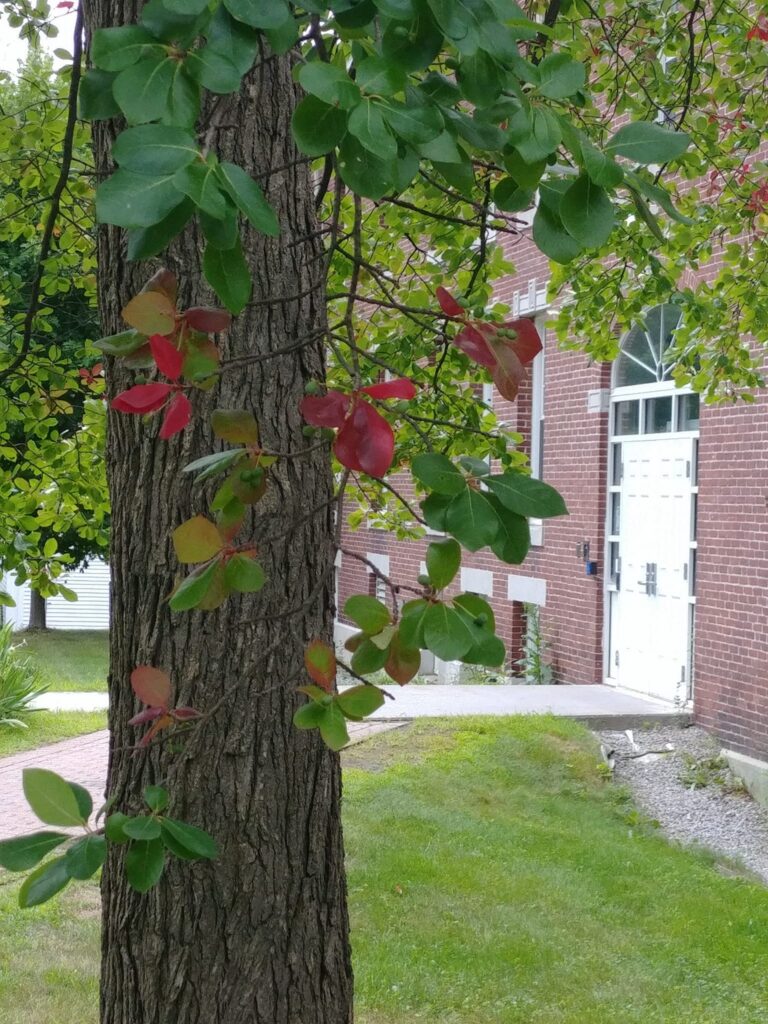A new tree caught my attention on campus today because the leaves are starting to turn red. There are two Black Tupelo, (Nyssa sylvatica), next to each other, across from the Frost House on the north west side of Mary Lyons.
Notice the elliptical leaves are dark glossy green and watch over the next weeks as the foliage turns shades of yellow, orange, bright red, purple or scarlet- different colors on the same branch even. Maybe we should call this the rainbow tree?
Check out the bark and see if you think it resembles an alligator’s hide?
Are the leaves opposite or alternate in their arrangement on the stem?
Watch as the small fruit, in clusters of 2 to 3, ripens to bluish-black in late September and early October. On August 18th, 2020 the fruit is still green.
Best of all the fruit, (called drupes), of this native tree, is eaten by many species of birds and mammals, so if you want to try some foraging, you will have competition. Expect a sour or bitter taste.
Van Morrison released the song “Tupelo Honey” in 1971, referring to the honey production from Tupelos; honey from the White Tupelo is a million dollar industry in Florida. Both the Black and White provide nutrients for pollinators!!
I wrote this post to add to my tree tours on campus this fall, so far, four are scheduled for various classes. So, trees were on my mind as I was walking through campus today on my way to see the exhibit at the Museum of the White Mountains on “Watching The Seasons Change.”

